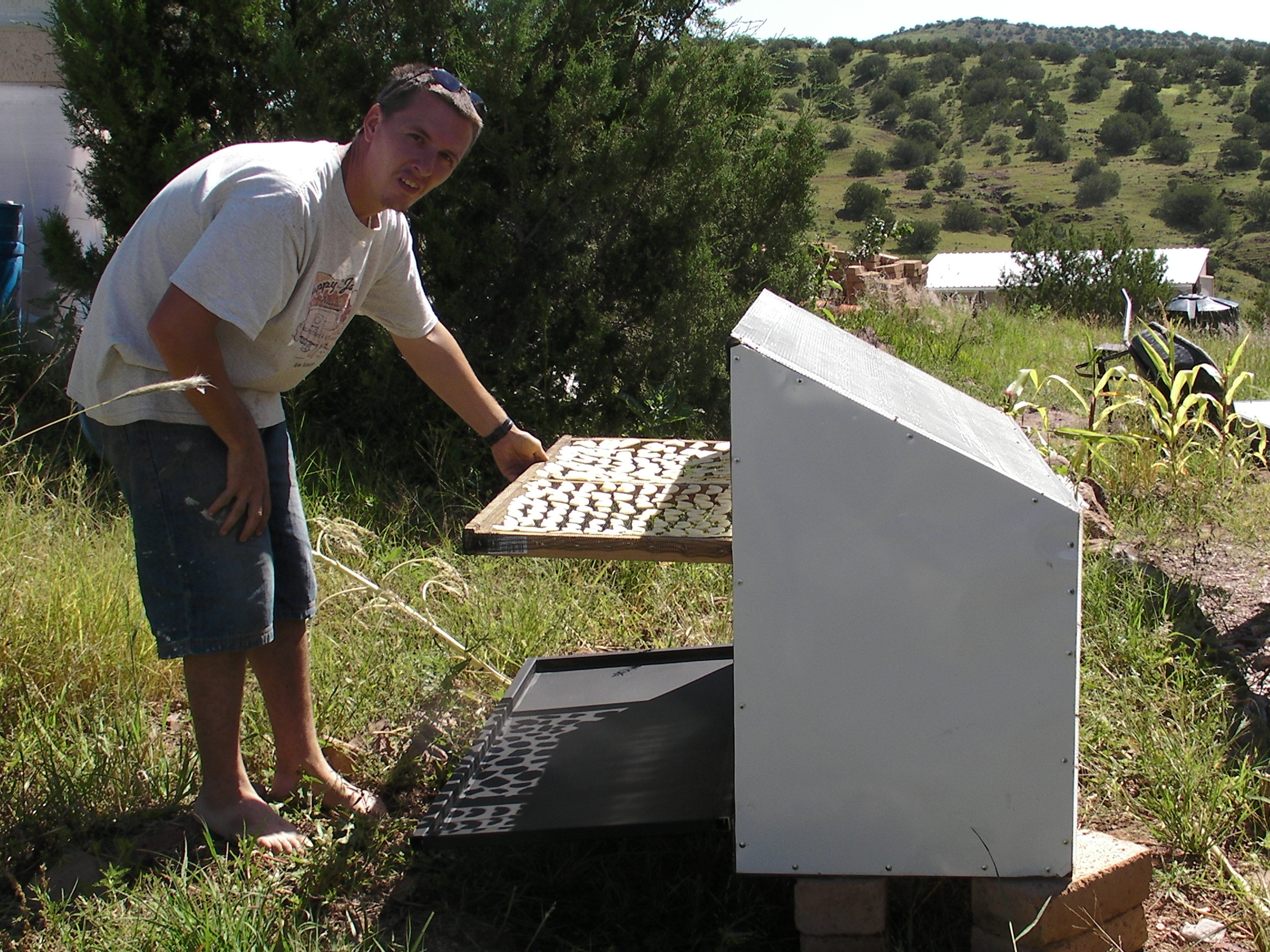If you’re growing your own fruit and vegetables, or just trying to eat food that’s produced locally, you come across one obvious problem: when something is in season, you have more than you can handle, and then there’s nothing for the rest of the year.
The obvious solution is to preserve your food when you have it in abundance, and drying with the sun is one of the easiest, most energy-efficient ways to do so. It also maintains a lot more of the original nutrients than canning or freezing.
The concept of a solar food dryer is simple: move warm air over thinly sliced food. The warmer the air, the more moisture it can remove from the food. However, you don’t want the air to move too quickly, as it will cause the temperature to decrease. Our design creates just enough air movement and warmth to dry food quickly.
The food is laid out on trays, which sit behind a transparent polycarbonate sheet. Below the trays there’s a metal shelf, painted black, that serves as a heat absorber. As heated air rises through the food, cool air is drawn in through the bottom vent, and the heated, moisture-laden air flows out the exhaust at the top.
Because the food dryer is something we plan to use for many years to come, we decided to make ours out of metal. If you don’t have access to a welder, you can make the frame out of wood, but you’ll need to adjust these plans accordingly.


